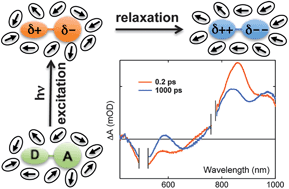Charge transfer relaxation in donor–acceptor type conjugated materials†
Abstract
The development of conjugated materials bearing electron-rich and electron-poor units along their backbone introduces new possibilities to control functionality for organic electronic applications through charge transfer character in ground and excited states. A thorough understanding of intramolecular dipoles and their evolution during excited state relaxation is necessary in order to fully exploit this opportunity. PCDTBT is an alternating donor–acceptor


 Please wait while we load your content...
Please wait while we load your content...